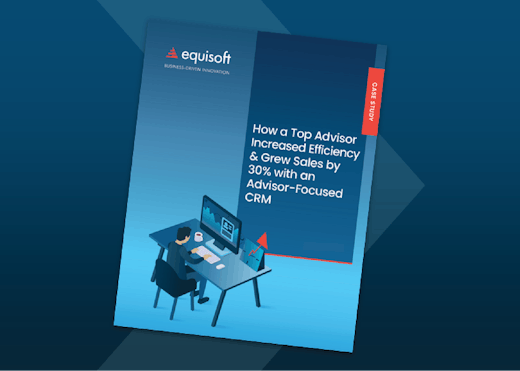How is financial advisor software both a threat and an opportunity for growth? #
Dire predictions about the death of the financial advisor caused by new tech that enables customers to purchase insurance directly have been swirling for years. And, yet, here we are—still enjoying the benefits of a robust advisor community.
While some clients have moved to purchasing their insurance through a D2C portal, usually for simple products, the trend has not exactly wiped advisors off the face of the map. That’s true, even in a period where in-person meetings have become largely impossible, and many carriers have accelerated digital transformation projects that provide direct sales opportunities.
In fact, the transformative power of technology has actually given financial advisors the opportunity to move away from the fulfillment of simple needs, and redefine themselves as true providers of advice. Now, more than ever, they are laser-focused on meeting an increasing number of their clients’ financial and life goals.
What is needed to capitalize on the opportunity in front of financial advisors? #
For many advisors, meeting a broader set of needs has meant becoming licensed to provide both insurance and investment solutions. These dual-licensed advisors have more complexity in their business since they have more involved client needs to uncover, and have more product options available as solutions.
For these advisors, it’s critical to integrate the right technologies into their tech stack in order to maintain efficiency and keep the focus squarely on their clients.
What are the challenges with financial advisor software? #
The financial advisor tech stack is the set of software solutions, tools and apps that they use throughout their practice to manage activity, conduct financial analysis, market and sell. In short, it’s the software that enhances the value they offer to clients—and optimizes the management of their practice.
Without the right tech stack, practice growth will be difficult, and client relationships are likely to suffer unnecessary frustrations and challenges.
Download the full eBook. Click here.
What are the potential pitfalls of financial advisor software? #
While financial advisor tech stacks have many elements—from social media and marketing tools, to illustration, eApp and quoting apps, to messaging and communication solutions—the two pillars of the stack most important to dual-licensed advisors are: a CRM and a portfolio design solution. However, not all financial advisor software is created equal. Two especially common and problematic pitfalls to look out for are:
Pitfall #1: Not advisor specific #
Any software that is not advisor specific will require extensive configuration in order to make it work well in the advisor’s practice. This is especially true of CRM solutions.
Most of the popular solutions were not specifically designed for a financial advisor’s practice. So, they require a lot of customization and configuration in order to make them work effectively. A generic CRM that has to accommodate pizza restaurants and car dealerships and law firms, can’t be specifically tailored to the advisor world of commissions and complex sales straight out of the box.
Many advisors have purchased this type of advisor CRM software in the past, hoping it will bring remarkable efficiencies to their operations. But the effort required to customize and maintain the software negated the benefits and often led to advisors getting discouraged. In these cases, the holy grail CRM fell into disuse, maybe only being used as a simple personal information look-up tool.
Pitfall #2: Not integrated #
If CRM and portfolio design tools are not integrated, then a number of problems arise. Advisors will be forced to waste time switching between apps to accomplish tasks. Since data can’t be brought forward from one solution to another, too much time will have to be spent needlessly re-keying existing data. And, often, more time will be thrown away just searching for data that should have been readily at hand.
Integration is a critical, but often overlooked criteria for making the right CRM and portfolio design software choices—it is the fulcrum for increasing efficiency and effectiveness.
What’s the best way to avoid these financial advisor software pitfalls? #
Choosing the wrong CRM and portfolio design software can create a whole host of headaches advisors don’t need in their day—when their focus needs to be on getting in front of, and helping as many clients as possible.
And the frustrations are doubled for dual-licensed advisors, who have to manage both insurance and investment needs and tools. To find out more about how to avoid making the wrong financial advisor software choices, and how the right advisor tech stack can enhance their ability to meet more client needs, check out our Ultimate Advisor Guide to Supercharging your Practice eBook.




